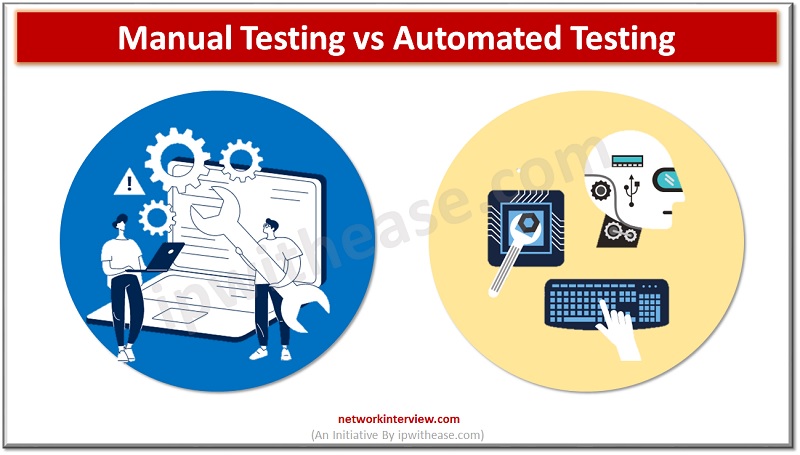
Manual Testing vs Automated Testing: Software Testing
When it comes to software testing, there are two main approaches – manual testing and automated testing. Each one has its own advantages and disadvantages, and it can be difficult to decide which approach is best for your needs. In this article, we’ll compare manual testing and automated testing in order to help you make an informed decision.
What is Manual Testing?
Manual testing is a process in which tests are performed manually by a human tester. This is done to identify any bugs, errors, or deficiencies in the software application. Manual testing is mainly used to check the functionality, usability, and compatibility of the software.
When performing manual tests, the tester will use a test script, which is a document that contains instructions on how to test the software. The test script can include instructions on what data to enter, which buttons to click, and what results to expect. The tester will then use their experience and knowledge to determine if the software is functioning correctly.
Manual testing is a labor-intensive process, and is often used to verify the results of automated tests. This is because manual tests can provide a more detailed and accurate picture of how the software is functioning.
What is Automated Testing?
Automated testing is a process in which tests are performed using specialized software. The purpose of automated testing is to quickly and accurately identify any problems in the software. Automated tests are usually written in a scripting language such as Java, Python, or C++, and can be run multiple times with different inputs to ensure that the software is functioning correctly.
Automated tests are typically more efficient than manual tests, as they can be run quickly and without any human intervention. However, automated tests can be more difficult to set up and maintain, and require a greater degree of technical expertise.
Comparison between Manual Testing and Automated Testing
When comparing manual testing and automated testing, the main difference between the two is efficiency. Automated tests are much faster and more efficient than manual tests, as they can be run multiple times with different inputs to ensure that the software is functioning correctly. Automated tests are also more precise than manual tests, as they can identify bugs and errors that would be difficult to detect manually.
However, manual tests can provide a more detailed and accurate picture of the software’s functionality. Manual tests can also be more effective at uncovering usability issues and compatibility issues, as they are performed by a human tester with experience and knowledge.
Pros and Cons of Manual Testing
PROS
- It can provide a more detailed and accurate picture of the software’s functionality.
- Manual tests can also be more effective at uncovering usability issues and compatibility issues, as they are performed by a human tester with experience and knowledge.
CONS
- Manual testing is a labor-intensive process, and can be time-consuming and costly.
- Manual tests also require a greater degree of technical expertise, as the tester must be familiar with the test script and be able to interpret the results.
Pros and Cons of Automated Testing
PROS
- It is much faster and more efficient than manual testing. Automated tests can be run multiple times with different inputs to ensure that the software is functioning correctly.
- Automated tests can also be more precise than manual tests, as they can identify bugs and errors that would be difficult to detect manually.
CONS
- Automated tests can be more difficult to set up and maintain, and require a greater degree of technical expertise.
- Automated tests also tend to be less effective at uncovering usability issues and compatibility issues, as they are performed by a computer with no experience or knowledge.
When is Manual Testing Preferred?
Manual testing is preferred when a detailed and accurate picture of the software’s functionality is needed. Manual tests are also more effective at uncovering usability issues and compatibility issues, as they are performed by a human tester with experience and knowledge.
Manual testing is also preferred when there is a need for rapid feedback, such as when testing a new feature or bug fix. Manual tests can provide immediate feedback, which can be used to quickly identify and fix any issues.
When is Automated Testing Preferred?
Automated testing is preferred when speed and accuracy are of the utmost importance. Automated tests can be run quickly and without any human intervention, and can identify bugs and errors that would be difficult to detect manually.
Automated testing is also preferred when there is a need for repeatable tests, such as when testing the same feature or bug fix multiple times. Automated tests can be run multiple times with different inputs to ensure that the software is functioning correctly.
Conclusion
In conclusion, manual testing and automated testing each have their own advantages and disadvantages, and it can be difficult to decide which approach is best for your needs. Manual testing is preferred when a detailed and accurate picture of the software’s functionality is needed, while automated testing is preferred when speed and accuracy are of the utmost importance. Before making a decision, it’s important to consider your needs and the resources available to you.
Manual testing and automated testing are both powerful tools for software testing, and can help you ensure that your software is functioning correctly. By understanding the differences between these two approaches, you can make an informed decision that is best suited for your needs.
Continue Reading:
Exploratory Testing vs Scripted Testing: Software Development
8 Key Software Testing Methods
Tag:comparison, software



